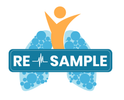On 23 February 2024, Sanne van Dijk, Marjolein Brusse-Keizer, Charlotte Bucsán, Eline Ploumen, Wendy van Beurden, Job van der Palen, Carine Doggen, and Anke Lenferink published a paper titled "Lack of Evidence Regarding Markers Identifying Acute Heart Failure in Patients with COPD: An AI-Supported Systematic Review" in the International Journal of Chronic Obstructive Pulmonary Disease.
You can read the full paper here.
The abstract is presented below:
Background
Due to shared symptoms, acute heart failure (AHF) is difficult to differentiate from an acute exacerbation of COPD (AECOPD). This systematic review aimed to identify markers that can diagnose AHF underlying acute dyspnea in patients with COPD presenting at the hospital.
Methods
All types of observational studies and clinical trials that investigated any marker’s ability to diagnose AHF in acutely dyspneic COPD patients were considered eligible for inclusion. An AI tool (ASReview) supported the title and abstract screening of the articles obtained from PubMed, Scopus, Web of Science, the Cochrane Library, Embase, and CINAHL until April 2023. Full text screening was independently performed by two reviewers.
Twenty percent of the data extraction was checked by a second reviewer and the risk of bias was assessed in duplicate using the QUADAS-2 tool. Markers’ discriminative abilities were evaluated in terms of sensitivity, specificity, positive and negative predictive values, and the area under the curve when available.
Results
The search identified 10,366 articles. After deduplication, title and abstract screening was performed on 5,386 articles, leaving 153 relevant, of which 82 could be screened full text. Ten distinct studies (reported in 16 articles) were included, of which 9 had a high risk of bias. Overall, these studies evaluated 12 distinct laboratory and 7 non-laboratory markers. BNP, NT-proBNP, MR-proANP, and inspiratory inferior vena cava diameter showed the highest diagnostic discrimination.
Conclusion
There is not much evidence for the use of markers to diagnose AHF in acutely dyspneic COPD patients in the hospital setting. BNPs seem most promising, but should be interpreted alongside imaging and clinical signs, as this may lead to improved diagnostic accuracy. Future validation studies are urgently needed before any AHF marker can be incorporated into treatment decision-making algorithms for patients with COPD.
More recent news
 Mon 24 Nov 2025EUHPP Live Webinar on RE-SAMPLE outcomes
Mon 24 Nov 2025EUHPP Live Webinar on RE-SAMPLE outcomes Mon 1 Sep 2025Closing Chapter: The RE-SAMPLE project ends, but legacy remains
Mon 1 Sep 2025Closing Chapter: The RE-SAMPLE project ends, but legacy remains Fri 13 Jun 2025RE-SAMPLE Project showcased at HOPE Agora 2025
Fri 13 Jun 2025RE-SAMPLE Project showcased at HOPE Agora 2025 Fri 13 Jun 2025RE-SAMPLE Project Final Consortium Meeting
Fri 13 Jun 2025RE-SAMPLE Project Final Consortium Meeting Thu 13 Mar 2025M48 Project Consortium meeting
Thu 13 Mar 2025M48 Project Consortium meeting

